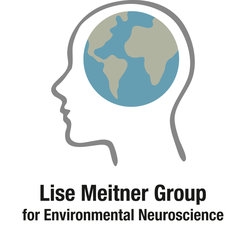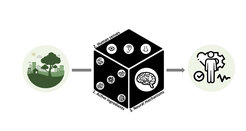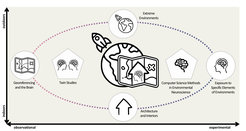Lise Meitner Group for Environmental Neuroscience
Head: Simone Kühn

The physical environment has a major impact on well-being and mental health. The field of psychiatry has strongly stressed the potentially harmful effects of urban living (Peen et al., 2010), whereas environmental psychology has focused on the beneficial effects of contact with nature (McMahan & Estes, 2015; Stevenson et al., 2018). However, humans have a tendency to underestimate the influence that the physical environment and the contextual surroundings exert on our behavior, a phenomenon that has been termed “fundamental attribution error” in social psychology. In view of the multitude of environmental problems we are currently facing, such as climate change, elevated pollution, and destruction of habitats, a better understanding of the effects of the physical environment on the individual is urgently needed.
Therefore, our overarching research question is how the physical environment affects human beings. Our goal is to open the black box between the physical environment and mental health and well-being, as shown in Figure 1. We think that there are three major questions that need to be answered concerning the link between the physical environment and mental health. First, the so-called “active ingredients” of the physical environment that elicit positive mental health effects need to be identified (e.g., the color green, air pollutants, soundscapes, terpenes). Second, and related to the first point, the major human sensory pathways by which the active ingredients are perceived should be determined. For instance, is visual input from a natural environment sufficient, or is the interaction of multiple sensory systems more effective in improving well-being? Third, the neural mechanisms, namely the brain regions involved in processing the physical environment, remain to be discovered. For example, this will help to unravel whether salutogenic effects of the natural environment are primarily driven by cognitive or affective paths. This mechanistic approach will link the new field of environmental neuroscience to theories from environmental psychology that have long been debating whether the restorative effects of nature exposure are primarily grounded in recovery from stress (Stress Recovery Theory [SRT]; Ulrich et al., 1991) or in restoration from attentional fatigue (Attention Restoration Theory [ART]; Kaplan & Kaplan, 1989).

Figure 1. Illustration of the black box between the physical environment and mental health.
Our research program is organized around four main topics: (1) exploring long-term effects of outdoor living environments, (2) examining the effects of extreme environments, (3) investigating the acute effects of environmental stimuli such as images, sounds, and smells, and (4) probing the effects of interiors and architecture. Furthermore, we have started to work on two more methodological themes: (5) one in which we attempt to combine approaches developed in computer science with environmental neuroscience, and (6) one in which we utilize the classical twin design and methodology developed in behavioral genetics, enabling us to investigate the impact of the physical environment on the brain and well-being while controlling for genetics and selective migration triggered by genetic differences. As shown in Figure 2, the research topics range all the way from observational, correlational research to experimental randomized controlled trials (x-axis) and from indoor to outdoor, and even extraterrestrial environments (y-axis).

Figure 2. Illustration of the interdependence between the research areas. Encircled research areas are mostly defined based on the content, whereas polygons indicate research areas defined based on the methodological approach.


